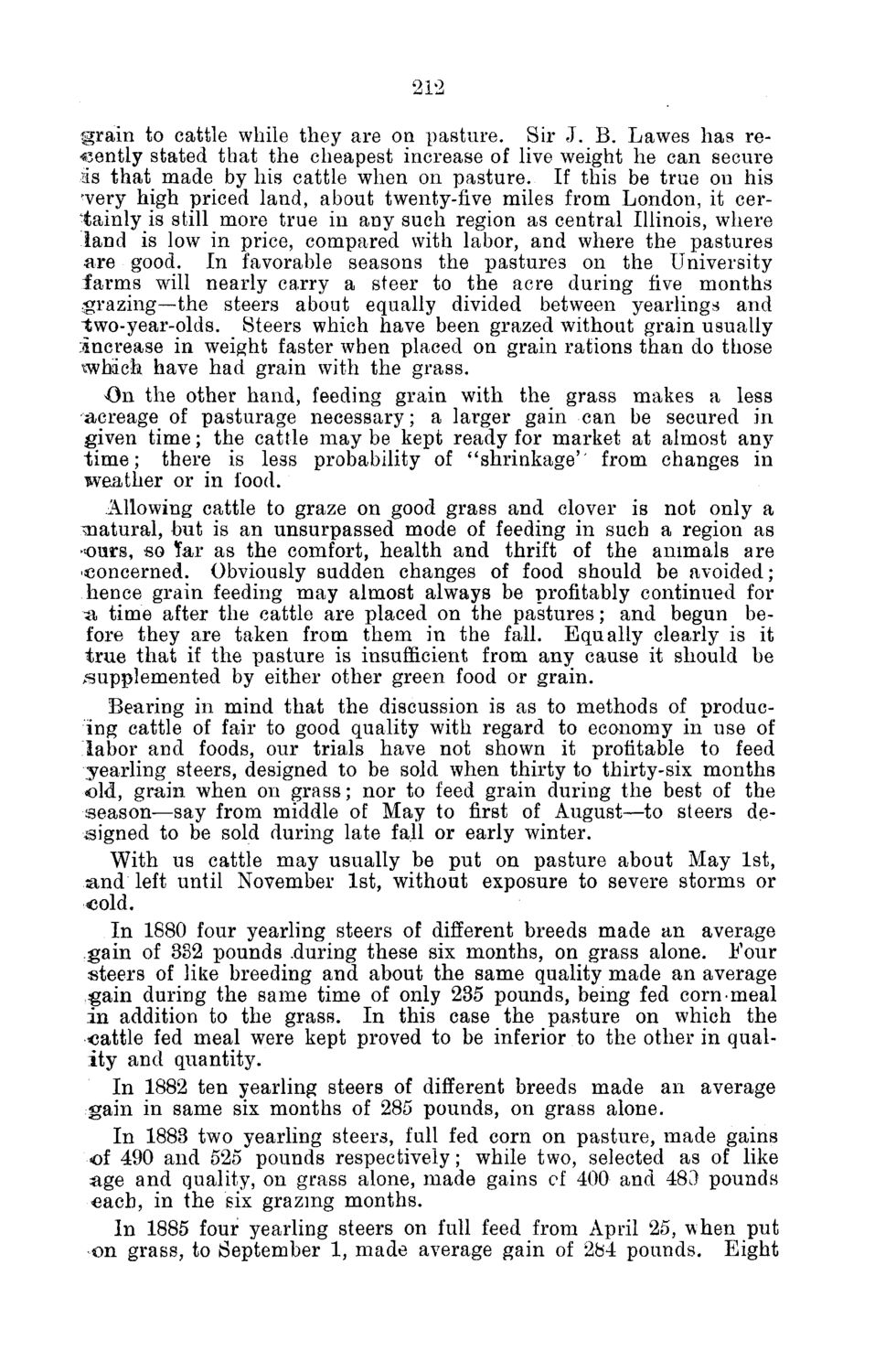| |
| |
Caption: Board of Trustees Minutes - 1886
This is a reduced-resolution page image for fast online browsing.

EXTRACTED TEXT FROM PAGE:
212 grain to cattle while they are on pasture. Sir J. B. Lawes has recently stated that the cheapest increase of live weight he can secure i s that made by his cattle when on pasture. If this be true on his ? very high priced land, about twenty-five miles from London, it certainly is still more true in any such region as central Illinois, where land is low in price, compared with labor, and where the pastures •are good. In favorable seasons the pastures on the University farms will nearly carry a steer to the acre during five months .grazing—the steers about equally divided between yearlings and two-year-olds. Steers which have been grazed without grain usually increase in weight faster when placed on grain rations than do those which have had grain with the grass. On the other hand, feeding grain with the grass makes a less acreage of pasturage necessary; a larger gain can be secured in given time; the cattle may be kept ready for market at almost any time; there is less probability of "shrinkage'' from changes in weather or in food. Allowing cattle to graze on good grass and clover is not only a ^natural, but is an unsurpassed mode of feeding in such a region as ours, so Tar as the comfort, health and thrift of the animals are concerned. Obviously sudden changes of food should be avoided; hence grain feeding may almost always be profitably continued for a time after the cattle are placed on the pastures; and begun before they are taken from them in the fall. Equally clearly is it true that if the pasture is insufficient from any cause it should be supplemented by either other green food or grain. Bearing in mind that the discussion is as to methods of producing cattle of fair to good quality with regard to economy in use of labor and foods, our trials have not shown it profitable to feed yearling steers, designed to be sold when thirty to thirty-six months old, grain when on grass; nor to feed grain during the best of the season—say from middle of May to first of August—to steers designed to be sold during late fall or early winter. With us cattle may usually be put on pasture about May 1st, a n d left until November 1st, without exposure to severe storms or cold. In 1880 four yearling steers of different breeds made an average gain of 332 pounds .during these six months, on grass alone. Four steers of like breeding and about the same quality made an average gain during the same time of only 235 pounds, being fed corn-meal i n addition to the grass. In this case the pasture on which the cattle fed meal were kept proved to be inferior to the other in quality and quantity. In 1882 ten yearling steers of different breeds made an average gain in same six months of 285 pounds, on grass alone. In 1883 two yearling steers, full fed corn on pasture, made gains of 490 and 525 pounds respectively; while two, selected as of like age and quality, on grass alone, made gains ef 400 and 483 pounds -each, in the six grazing months. In 1885 four yearling steers on full feed from April 25, when put on grass, to September 1, made average gain of 284 pounds. Eight
| |